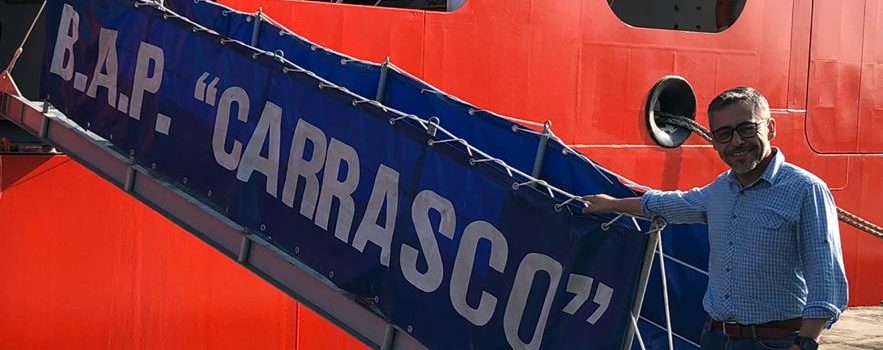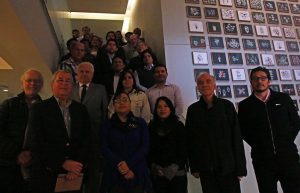IFOP collaborated with the proposal strengthening to create Peru’s Nazca Dorsal National Reserve
November 27th, 2019The neighboring country, through its State Natural Protected Areas National Service (Sernanp), an agency wich belogs to the Environment Ministry, is implementing tthe creation of a Marine Protected Area process, in the National Reserve category in its Nazca submarine dorsal jurisdictional water area ; equivalent to the Nazca-Desventuradas Marine Park area created by Chile in 2015.
Between November 20th and 21rd , “Proposal of the Nazca Dorsal National Reserve” technical workshop was held in Lima, Peru, which was organized by State Protected Natural Areas National Service(Sernanp) under Environment Ministry, and the Instituto del Mar del Perú (Imarpe), sponsored by Oceana Perú NGO. The objective was to reinforce file technical background for Nazca-Peru Dorsal National Reserve creation .
The workshop was attended by the Ministry of Production, Ministry of Foreign Affairs, Ministry of Defense, Ingemmet and Hidronav representatives. Mauricio Gálvez, Head of the Technical Specialties Division of the Institute for Fisheries Development wa also invited as a guest expert,, together with Matthias Gorny (Oceana Chile) and Ariadna Mecho (Pure Ocean of Spain), who shared their research experiences and the creation process of Nazca-Desventuradas marine protected area, in the underwater mounts of Nazca Dorsal that is in chilean jurisdictional waters. Also ivited to this event were marine geologist Néstor Tevez, Luis Cerpa de Ingemmet, Jorge Quispe and Yesica Debo, oceanographers from Imarpe and DHN respectively, who presented oceanographic, biological and geological issues of the Nazca Dorsal.
The IFOP professional commented that “the process of creating the Marine Protected Area of the Peruvian component of the Nazca Ridge is well advanced, although as it is a poorly researched area there are several scientific information gaps. This workshop served to provide knowledge and information to partially fill those gaps. ” Asked about his presentation specific contribution, Galvez commented: “in 2009, I published a scientific article that was a complete review of the oceanographic, Nazca dorsal geological and fishing aspects and that of Salas y Gómez; Then in 2014 and 2015 I had to actively participate in the Nazca-Desventuradas Marine Park creation process in Chile with professionals from the Fisheries Undersecretariat and the Foreign Affairs Ministry. That is the experience that I was going to share with Peruvian colleagues, which was very well received and opened the possibility to future joint investigations throughout the Nazca Ridge, whether in its component of Peruvian, Chilean or international waters. The process we developed in Chile is very similar to what researchers are implementing in Peru, therefore, the lessons we learned in Chile when creating the Nazca-Desventuradas Marine Park are important to consider so that the Peru process is also successful. ”
IFOP maintains an active exchange and scientific collaboration in the marine sciencesarea, and particularly in fisheries sciences, with its counterpart the Peru Sea Institute (IMARPE). The collaboration relationship between both institutions was formalized 27 years ago through a collaboration agreement that has allowed northern Chile and southern Peru anchovy stock joint study. Recently, this agreement was extended to other areas of marine sciences in which they had already been collaborating as a result of the constant visits, internships and training courses for their respective researchers and that both institutions have been sharing.
More information on Nazca Dorsal Reserve National Reserve can be found at: www.sernanp.gob.pe/reserva-nacional-dorsal-de-nasca

